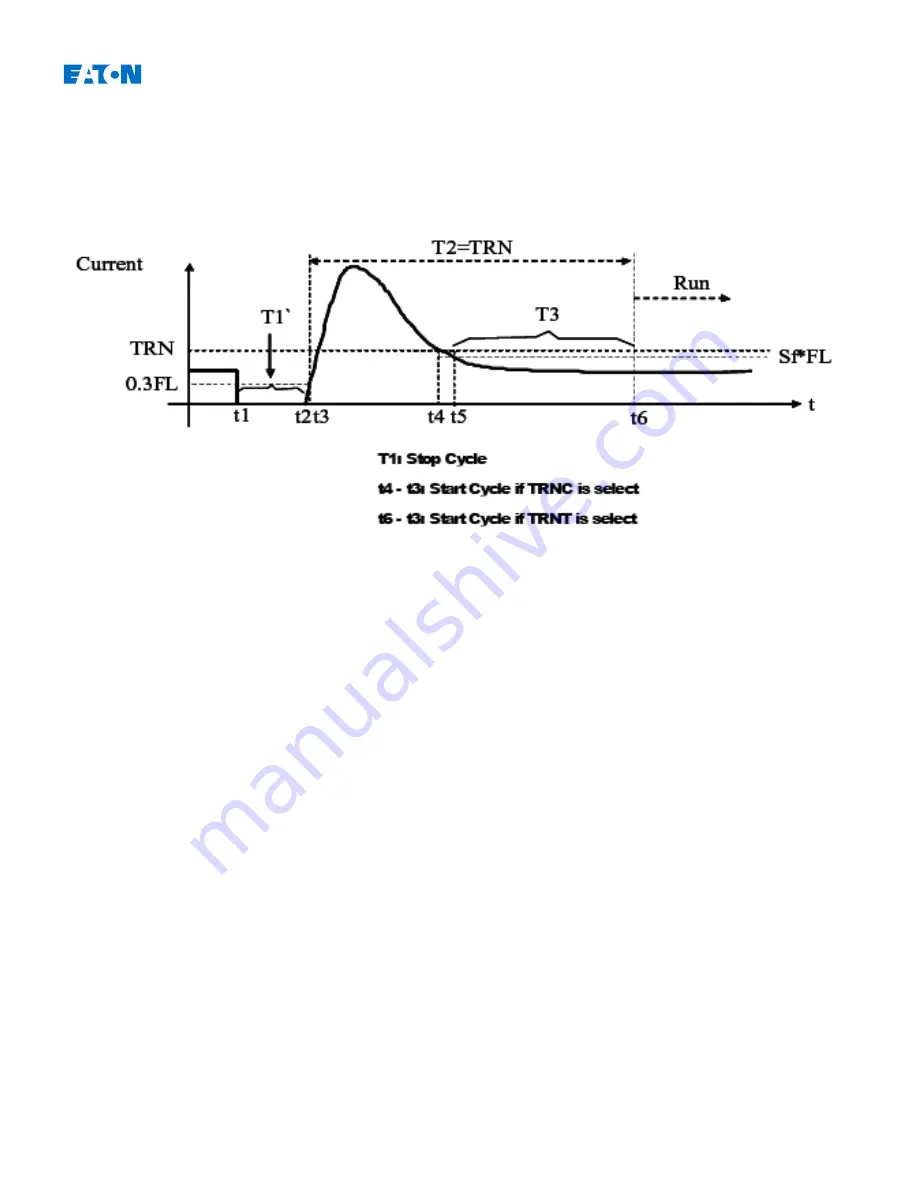
EMR-4000
IM02602009E
Motor State Transition
Start Control Module
The Start Control Module drawing shows an example of how the protective device reacts to a normal operating-cycle
current profile. Initially, the motor is stopped and the current is zero. As long as the protective device is not in a trip
state, it permits contactor energization by closing its trip contact in series with the contactor. The contactor is energized
by the operator or process control system through a normal two-wire or three-wire motor control scheme, external to the
protective device. The protective device declares a motor start when it senses a motor current that exceeds 30% of the
FLA setting. Meanwhile, the transition timer (TRNT) begins to run. The protective device also monitors the large
starting current, noting when the current falls below the transition level TRNC.
Start to Run transition is based on the setting TRN Criteria, which has four transition behaviors for the User to select:
•
TRN T
- Transition to RUN after time setting TRNT only. Current is ignored.
•
TRN I
- Transition when starting current drops below the setting only. If the time set in TRNT
expires before the current transition, the motor trips.
•
TRN T or I
- Transition on time or current, whichever comes first.
•
TRN T and I - Transition on time and current. Both must occur, and the current must drop below the
setting before the time delay expires. If the timer expires before the current falls below the
set transition level, the motor trips.
www.eaton.com
458






























